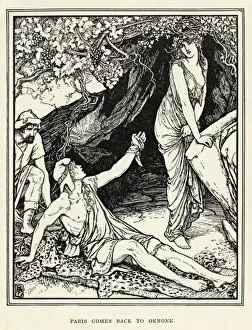Forgiveness Collection (page 9)
"Capturing the Essence of Forgiveness: A Journey through Art and Literature" In a world filled with turmoil, forgiveness emerges as a beacon of hope
All Professionally Made to Order for Quick Shipping
"Capturing the Essence of Forgiveness: A Journey through Art and Literature" In a world filled with turmoil, forgiveness emerges as a beacon of hope, depicted vividly in various artistic masterpieces. Rembrandt's "The Return of the Prodigal Son" portrays the power of unconditional love and acceptance. The prodigal son's return symbolizes redemption and highlights the transformative nature of forgiveness. Pompeo Girolamo Batoni's rendition further emphasizes this theme, showcasing how forgiveness transcends time. Through his brushstrokes, he captures the profound moment when reconciliation takes place, reminding us that it is never too late to seek or grant forgiveness. Charles Dickens' novel "Hard Times" delves into the complexities of forgiving oneself. As protagonist Louisa Gradgrind kneels down before her father seeking absolution for her past mistakes, we witness an internal struggle that resonates deeply within our own hearts. William Strang's painting "Christian Loses His Burden" illustrates forgiveness as a means to relieve one's burdensome guilt. It serves as a reminder that by letting go of resentment towards ourselves or others, we can find solace and freedom from emotional weight. Through etchings like "The Return of the Prodigal Son, " artists immortalize moments where compassion triumphs over judgment. These visual narratives inspire contemplation on our own capacity for mercy and understanding. Jesus' encounter with the Centurion exemplifies divine grace extended even to those considered unworthy. This oil painting reminds us that true forgiveness knows no boundaries or limitations; it is boundless in its ability to heal wounds and restore broken relationships. Similarly, Leonardo da Vinci's masterpiece "Christ and the Adulteress" depicts Christ offering compassion rather than condemnation towards an adulterous woman. In this poignant scene captured on canvas, we witness humanity at its most vulnerable – both sinners seeking redemption through mercy.


